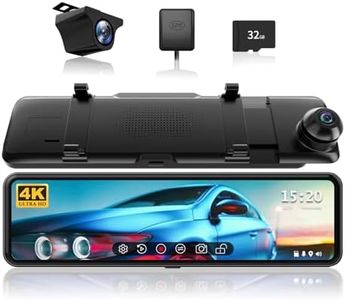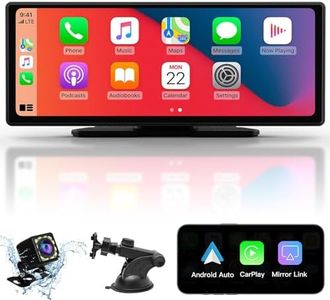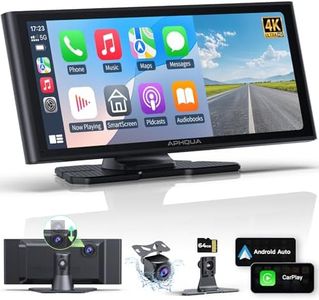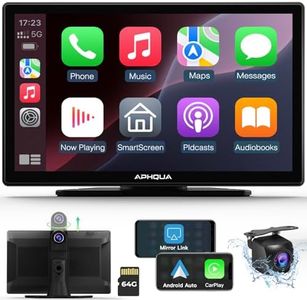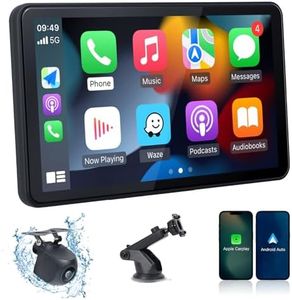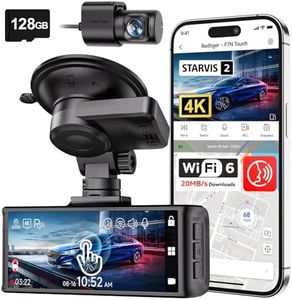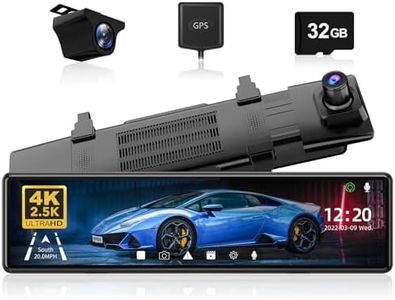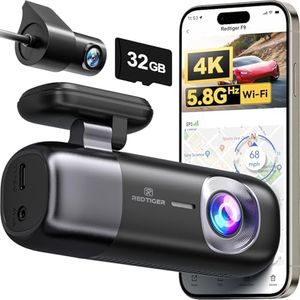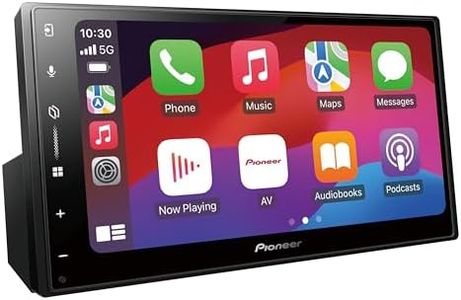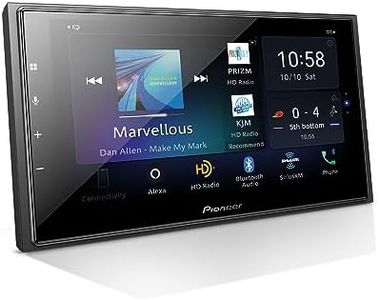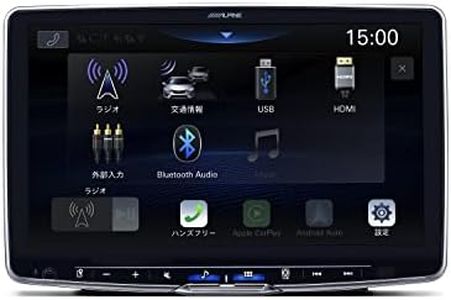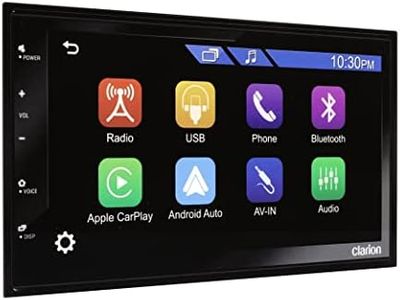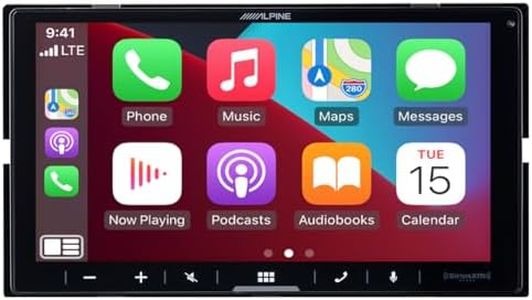We Use CookiesWe use cookies to enhance the security, performance,
functionality and for analytical and promotional activities. By continuing to browse this site you
are agreeing to our privacy policy
10 Best Apple Carplay Receiver
From leading brands and best sellers available on the web.Buying Guide for the Best Apple Carplay Receiver
Choosing the right Apple CarPlay receiver for your car can make daily driving much more enjoyable, allowing you to safely use navigation, music, and calls straight from your dashboard. The best approach is to think about how you use your phone in the car, what features matter most for your driving, and how you want your dashboard to look and feel. Taking the time to compare key specs ensures you get a receiver that feels like a natural upgrade to your car rather than just another gadget.Screen Size and TypeThe screen size of a CarPlay receiver is the diagonal measurement of its display, and it greatly affects both visuals and ease of use. Smaller screens (typically 6-7 inches) fit compact dashboards and are budget-friendly, while larger screens (8-10 inches and above) offer better visibility for maps and apps but might require more installation work. Screen type also matters; standard LCDs are common, but some offer capacitive touch for smoother swiping and better responsiveness. To choose the right size, consider the available space in your dashboard and how much screen real estate you want for navigation and controls. If you use your receiver mostly for music, a smaller screen is fine, but for frequent navigation and in-depth CarPlay use, a bigger, high-quality touch screen is easier and safer to operate.
Connectivity (Wired vs. Wireless CarPlay)CarPlay receivers can connect to your iPhone using a physical cable or wirelessly. Wired connections are typical and provide a stable, lag-free experience, but you need to plug your phone in every time. Wireless models offer more convenience—just get in the car and CarPlay connects automatically, but these can sometimes have a slight delay or require specific phone models. Think about your routine: if you always charge your phone in the car, a wired receiver might be fine. If you want your phone in your pocket or bag, and hate plugging it in, look for wireless features.
Audio Quality and OutputsAudio quality depends on the receiver’s built-in processing and the types of outputs it offers for connecting to your car’s speakers or external amps. Standard receivers are usually good for factory speakers, but if you have or plan to upgrade to premium speakers or add a subwoofer, look for receivers with high-voltage preamp outputs and advanced audio controls such as equalizers and time alignment. If you’re just looking for basic music playback, a standard audio setup is adequate; audiophiles or those who want concert-level sound should pay extra attention to these specs.
Installation CompatibilityCarPlay receivers come in different sizes, mostly single-DIN (taller and thinner) and double-DIN (wider and shorter) formats. Your car’s dashboard determines which size you need—some cars only fit single-DIN, others can fit double-DIN which usually offer bigger screens. It’s crucial to check your car’s make and model, and, if needed, look into dash kits or professional help for a perfect fit. Matching the receiver to your car’s available space is key to a clean, factory-style look and seamless daily use.
User Interface and ControlsThe layout and responsiveness of the receiver’s interface influence how safely and easily you can use it on the road. Some receivers have simple, touch-friendly menus, while others include physical buttons or knobs for volume and shortcuts. If you often adjust settings while driving, a few physical controls can help reduce distractions. For users who prefer a sleek look and use voice commands often, a fully touch-based interface is ideal. Think about what feels comfortable and safe during your typical drives.
Expandability and Extra FeaturesMany CarPlay receivers offer extra features, such as support for Android Auto, built-in navigation, rear-camera inputs, HD radio, or Bluetooth streaming for non-Apple devices. Some let you add more cameras or integrate with steering wheel controls. Look at your future needs—if you might switch to Android or want to add cameras, aim for a flexible receiver with multiple inputs and compatibility options.
